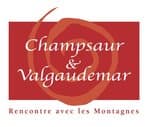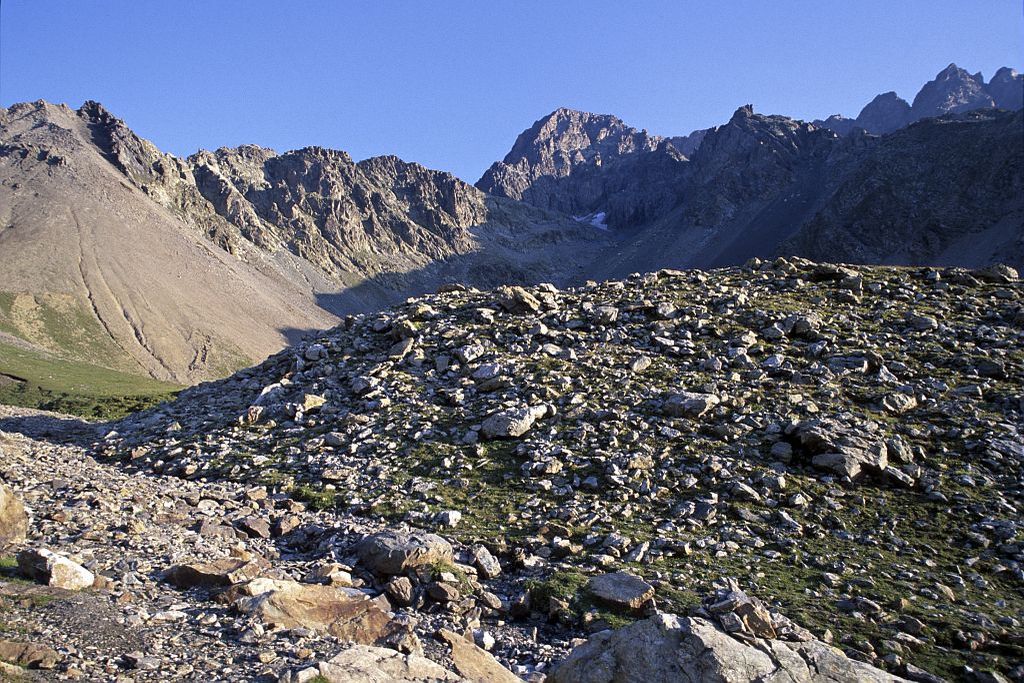
3. Tour du Vieux Chaillol - Stage 3 out of 5
After walking the majestic slopes of the Sirac, you will get to the Drac and its gravel-filled riverbed, which is here and there invaded by a spontaneous vegetation made up of willow and birch. A hinge between the Champsaur area and the Valgaudemar area, this leg enables you to reach the highest point of the Vieux Chaillol tour, which is the Valette pass.
Description
- From there, descend the scree to get to the Gouiran valley before climbing the shaly scree up to the Vallette pass.
- Change to the left bank once you reach the southern summit of the valley. The path heads down to the right bank of the De la Pierre stream.
- Continue to the Pré de la Chaumette pastures and then to the mountain refuge. The GR follows the right bank of the Drac, continues above the hamlet of Chaumeille ruins and leads to the Auberts bridge.
- Cross the Drac Blanc and follow the footpath on the hillside that then heads down to the Beaumes bridge.
- From here, follow a track that goes past the hamlet of Beaumes (1364 m). By the same track, you will reach the hamlet of Gondoins and get back to the road near to the bridge. Follow the road to Borels.
- Departure : Vallonpierre
- Arrival : Les Borels
- Towns crossed : La Chapelle-en-Valgaudemar and Champoléon
13 points of interest
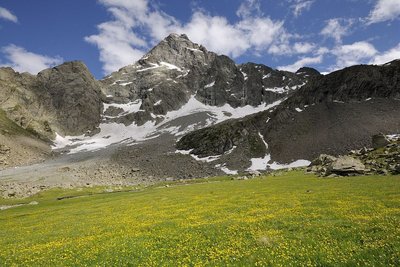
Le Sirac depuis Vallonpierre - Mireille Coulon - PNE  Top
TopThe Sirac
To the south of the Ecrins mountains, the Sirac is the last major summit at 3441 m. It stands proudly at the end of the Séveraisse valley. Often during the hike, you will lift your head in wonder and greet this noble lord with its crown. You will walk at its foot and see its hanging glaciers above you. It’s magic!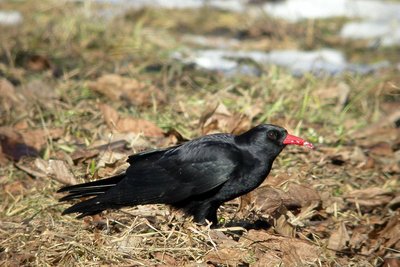
Crave à bec rouge - Damien Combrisson - PNE  Fauna
FaunaRed-billed chough
The red-billed chough is in many ways a surprising bird. It lives near cliffs and plays among the clouds, breaking the silence with a brief, strident, almost metallic cry. Hearing the echo from the cliff walls, its companions reply. With its confident gait and regular step, the red-billed chough patrols the Alpine pastures in small groups, meticulously searching for small worms and meadow grasshoppers. Apart from a few brief seasonal excursions in search of available food, the chough is a sedentary bird.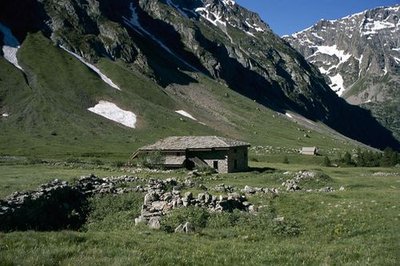
Le refuge du Pré de la Chaumette, Champoléon - Marc Corail - PNE  Pastoralism
PastoralismChaumette Meadow
The refuge is situated in a vast meadow formed by alpine grasslands that benefit from deep soil, on gentle slopes that are covered with snow on an average of eight months a year.
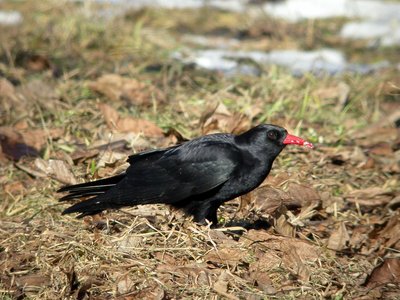
Crave à bec rouge - PNE - Combrisson Damien  Fauna
FaunaRed Billed Chough
The Red Billed Chough is a surprizing bird in many ways. It lives near to the cliffs and plays in the clouds, breaking the silence with its brief, strident and almost metallic cry. Alerted by the echo coming from the mountain wall, its companions reply to it. Its confident gait with a rhythmic step, the Red Billed Chough strides meticulously across the prairie in little groups to find small worm and crickets in the pasture... Except for occasional seasonal escapes linked to the availability of food, the Chough is sedentary.

Cascade de Prelles - PNE  Water
WaterPrelles Waterfall
The waterfall feeds in to the Drac blanc. The minor bed of the torrent is very large giving an idea of its violence and its capacity to wash away stone boulders.
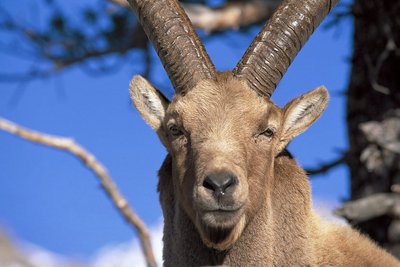
Bouquetin des Alpes - PNE - Chevalier Robert  Fauna
FaunaAlpine Ibex
The Alpine Ibex, also known as the « rock goat », is solid and covered with a coat that is chocolate coloured or beige depending on the season and its sex... Males and females both have ringed horns which grow throughout their life. The Alpine Ibex lives in groups, males on one side, etagnes (females) and the young on the other. In the winter, the females mix with the males during the mating period and give birth at the beginning of Summer. In order to observe it, look over on to the facing slope, the Alpine Ibex is sometimes visible in Spring.
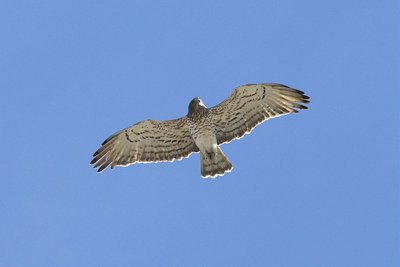
Circaète Jean-le-Blanc en vol - PNE - Saulay Pascal  Fauna
FaunaShort-toed Snake Eagle
Spring has only just returned when you can hear cries as loud as the church bells. You have to lift your head up to admire two large birds flying together, alternating aerobatics and hovering in the sky like two silver coloured kites playing with the wind.. Their light stocky silhouette and their darker head enable you to identify the Short-toed Snake Eagle. It mainly feeds on reptiles (lizards and snakes) which it captures by the head, which it can then regurgitate in order to feed its young.
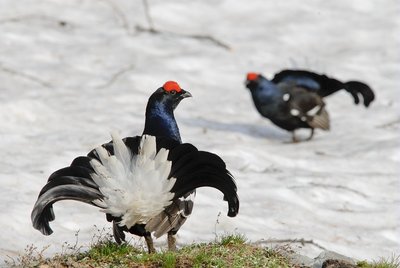
Tétras-lyre mâle en parade - PNE - Papet Rodolphe  Fauna
FaunaBlack Grouse
To observe Black Grouse in summer, you must get up early. In France, Black Grouse or the ‘Heather Cock’ is only found in the Alps. In Spring, the male with black feathers, a lyre shaped tail and white feathers under its tail puts on a display to impress the hens. In winter, it spends most of its time taking refuge in igloos dug in to the snow to protect itself from the cold. This is a time when it is particularly sensitive because it cannot compensate for the energy that it uses when it leaves its igloo too hastily disturbed by off-piste skier or a hiker with snowshoes.
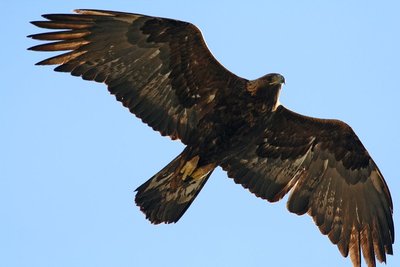
Aigle royal en vol - PNE - Couloumy Christian  Fauna
FaunaRoyal Eagle
The Royal Eagle is one of the most rare and protected species in Europe. Its large size, its dark colouring, its rectangular wings and its frequent movements in the open air enable it to be easily recognized. In the hottest hours of the day, it turns about regularly benefiting from the rising wind in order to gain altitude. Thanks to its excellent sight the Royal Eagle scans its surroundings in search of an imprudent marmot or a young chamois. In winter it regularly feeds off the cadavers of animals...
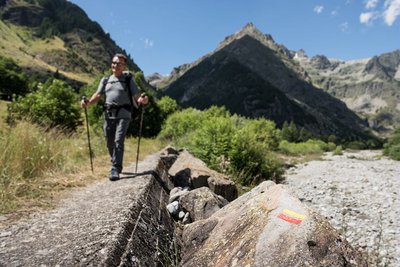
Randonneur sur les bords du Drac Blanc - © Parc national des Ecrins - Carlos Ayesta  Know-how
Know-howThe Drac dyke
Like all mountain valleys, the Champoléon valley is susceptible to the vagaries of the weather, torrential flooding in particular. The phenomenon is extreme when high rainfall coincides with the snowmelt. The water level then rises dramatically, carrying with it lots of sediment including large boulders. On All Saints' Day 1790, the ancient church of Saint-Vincent aux Borels and its cemetery were destroyed. In more recent times, the floods of October 2006 are still fresh in the memory. The dyke, therefore, helps to limit the damage and directs the water flow towards uninhabited areas.
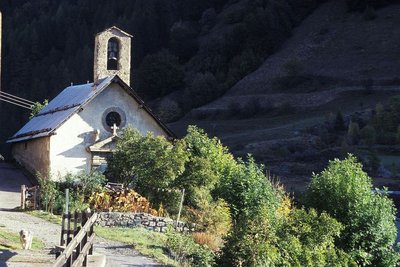
La chapelle des Gondouins - Marc Corail - PNE  History
HistoryThe old landscape
While roaming the Champoléon valley, you will have noticed the size of the Drac riverbed. At the time that the valley had 600 habitants (in 1789 compared to 110 nowadays), it is said that people threw the scythe hammer from one bank to the other over this impetuous stream...An abundant workforce built and maintained the walls and dikes that retained the earth and was carried on the backs of men or donkeys. After the devastating floods of 1914, the Drac washed away land and pasture. Several hamlets, such as Gondouins, were abandoned.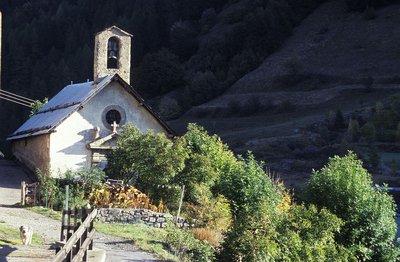
© Parc national des Écrins - Marc Corail  Vernacular heritage
Vernacular heritageThe chapel in Les Gondouins
Built in 1700 by the Pourroy family, the chapel of Saint-Jean-Baptiste stands at an altitude of 1,311 metres, in the hamlet of Les Gondouins. It has a worked doorway surmounted by a small cross, an unusual feature for a mountain chapel, and an elegant bell turret (a "panelle") with a bell which extends above the roof ridgeline. The interior is simple and unembellished, apart from a painting depicting Jesus being baptised by Saint John the Baptist.
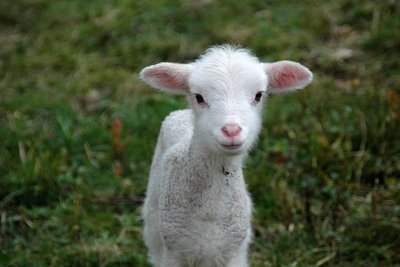
Agneau - Dominique Vincent - PNE  Pastoralism
PastoralismTardons
"Tardons" are lambs that are raised on mother's milk in the pastures of the Ecrins massifs. These lambs are celebrated every autumn at the Champoléon agricultural fair. This event spotlights pastoralism and assembles breeders, shepherds and the general public. On the agenda: the sale of sheep, produce market, lamb-based meals and entertainment.
Altimetric profile
Sensitive areas
Golden eagle
- Impacted practices:
- Aerial, , Vertical
- Sensitivity periods:
- JanFebMarAprMayJunJulAug
- Contact:
- Parc National des Écrins
Julien Charron
julien.charron@ecrins-parcnational.fr
Golden eagle
- Impacted practices:
- Aerial, , Vertical
- Sensitivity periods:
- JanFebMarAprMayJunJulAug
- Contact:
- Parc National des Écrins
Julien Charron
julien.charron@ecrins-parcnational.fr
Recommandations
The route between the Vallonpierre mountain refuge and the Pré de la Chaumette refuge can be snow covered late in the season. Do not hesitate to contact the refuge keepers. NB. For a shorter leg, it is possible to take the footpath on the right at Vallon Plat to head directly to Les Auberts.
Information desks
House of Champsaur
, 05260 Pont-du-Fossé
Information and documentation, temporary exhibitions. Sale of products and works of the Park. In the same space, home office Tourist High Champsaur. Free admission. All animations of the Park are free unless otherwise stated.
Tourisme Office of Champsaur & Valgaudemar
Les Barraques, 05500 La Fare en Champsaur
Source

Report a problem or an error
If you have found an error on this page or if you have noticed any problems during your hike, please report them to us here:



